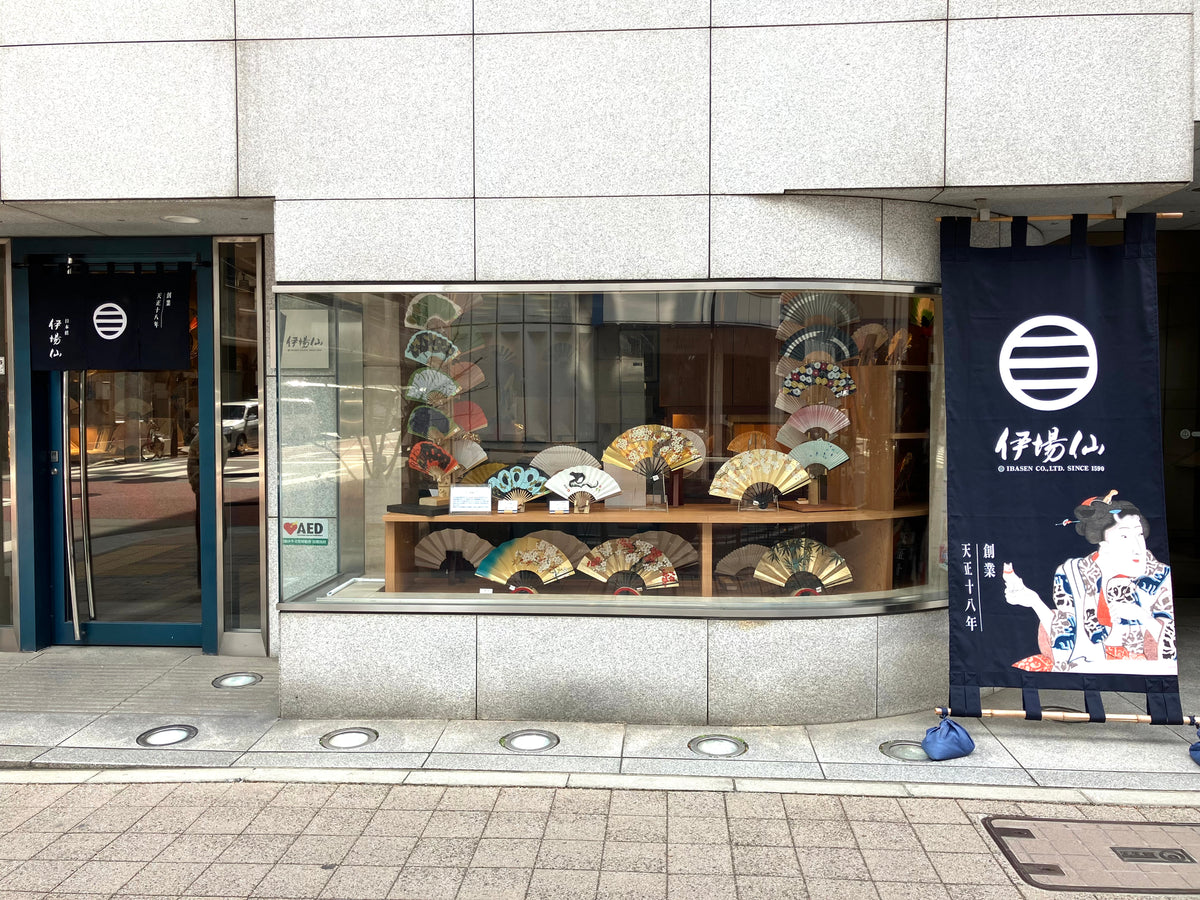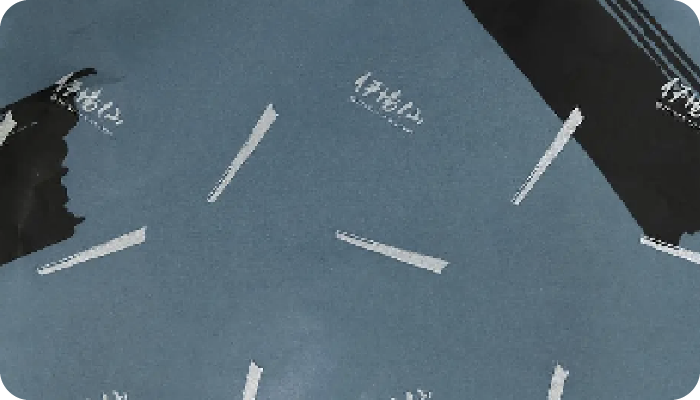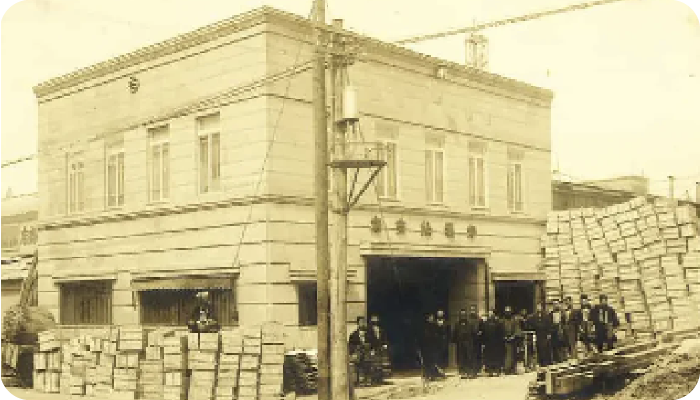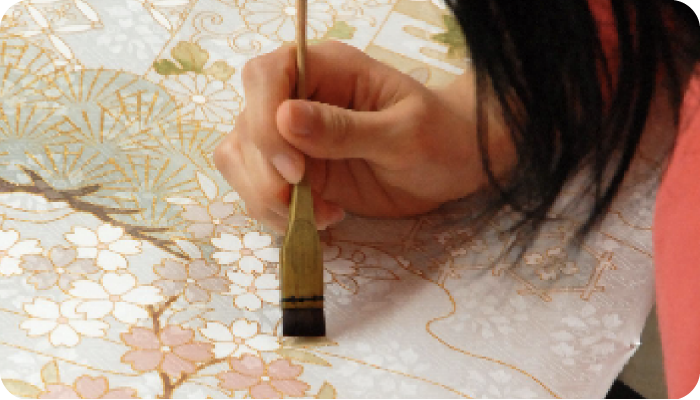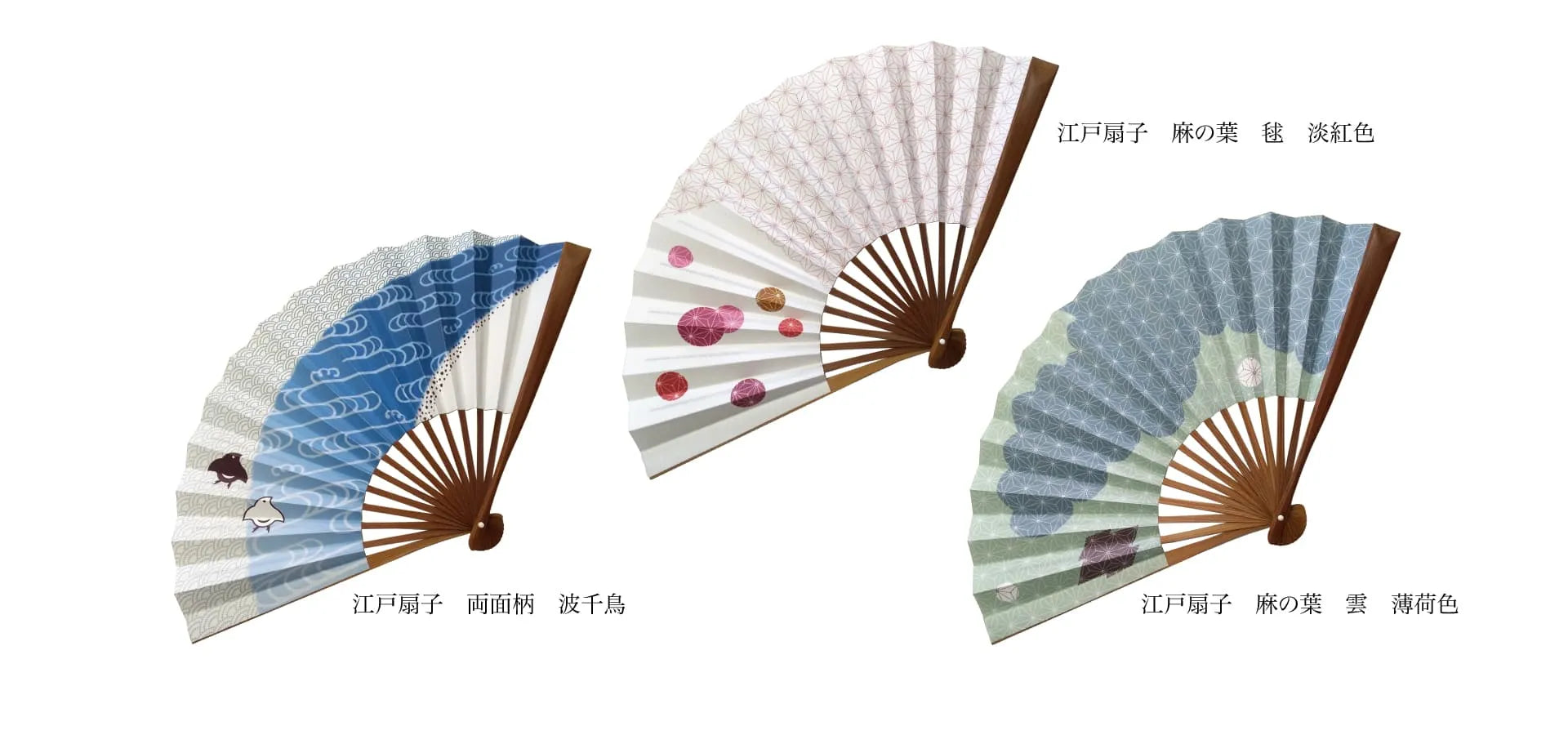
Edo fan Asano-ha deisign pattern
New Works Edo fanIntroduction of
Double-sided "Nami Chidori" pattern,Asano-ha deisignare two kinds of "Mari (Ball) Light Red" and "Kumo (Cloud) Usuka (Light Lily)".
Each of them uses auspicious patterns. They also make great gifts.Edo fanIt is also a good gift.

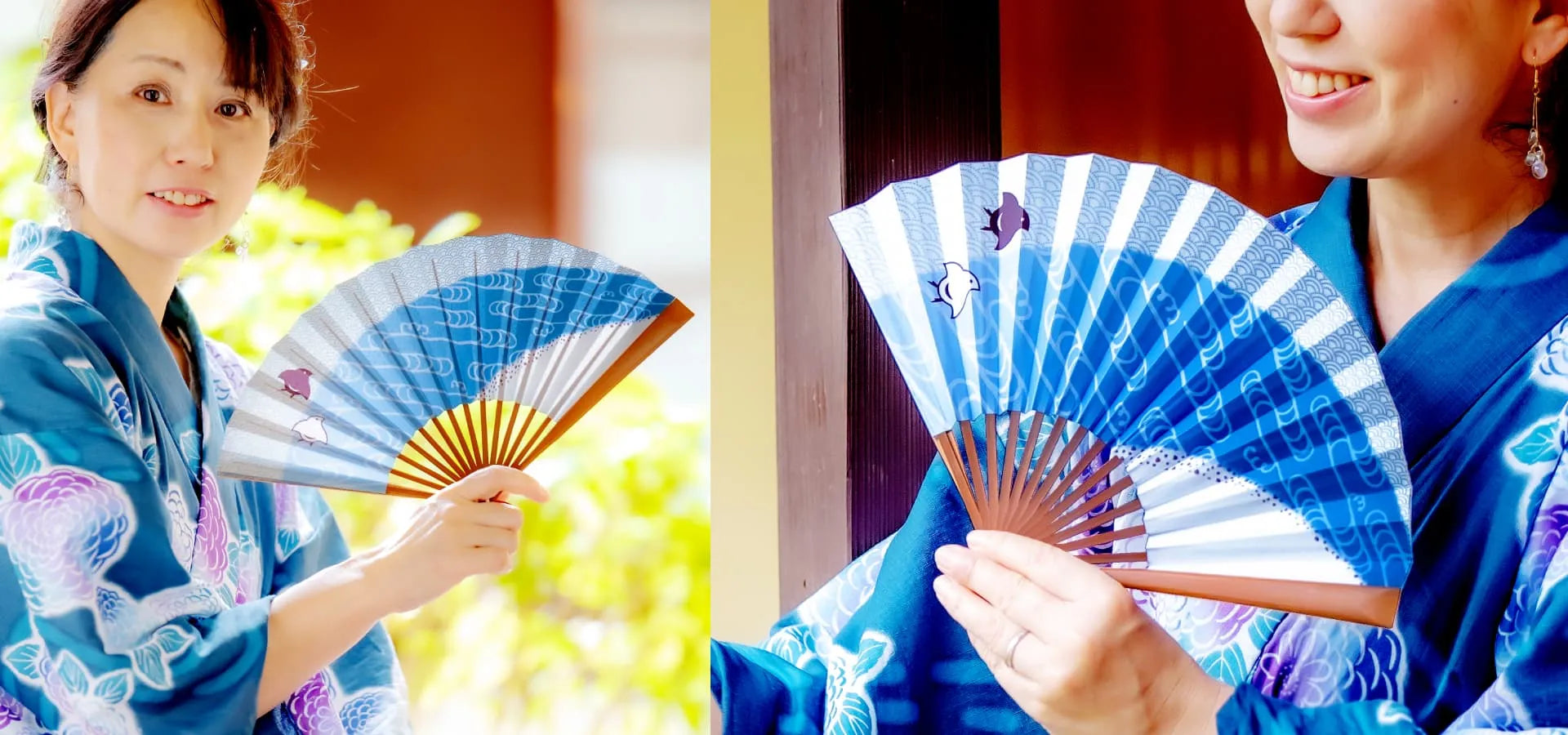
Wave Plover
The "Nami Chidori" (waves and water together) is a symbol of the world between waves, meaning "to overcome the stormy sea together" and is considered to be an auspicious design for marital bliss and family safety.
Title
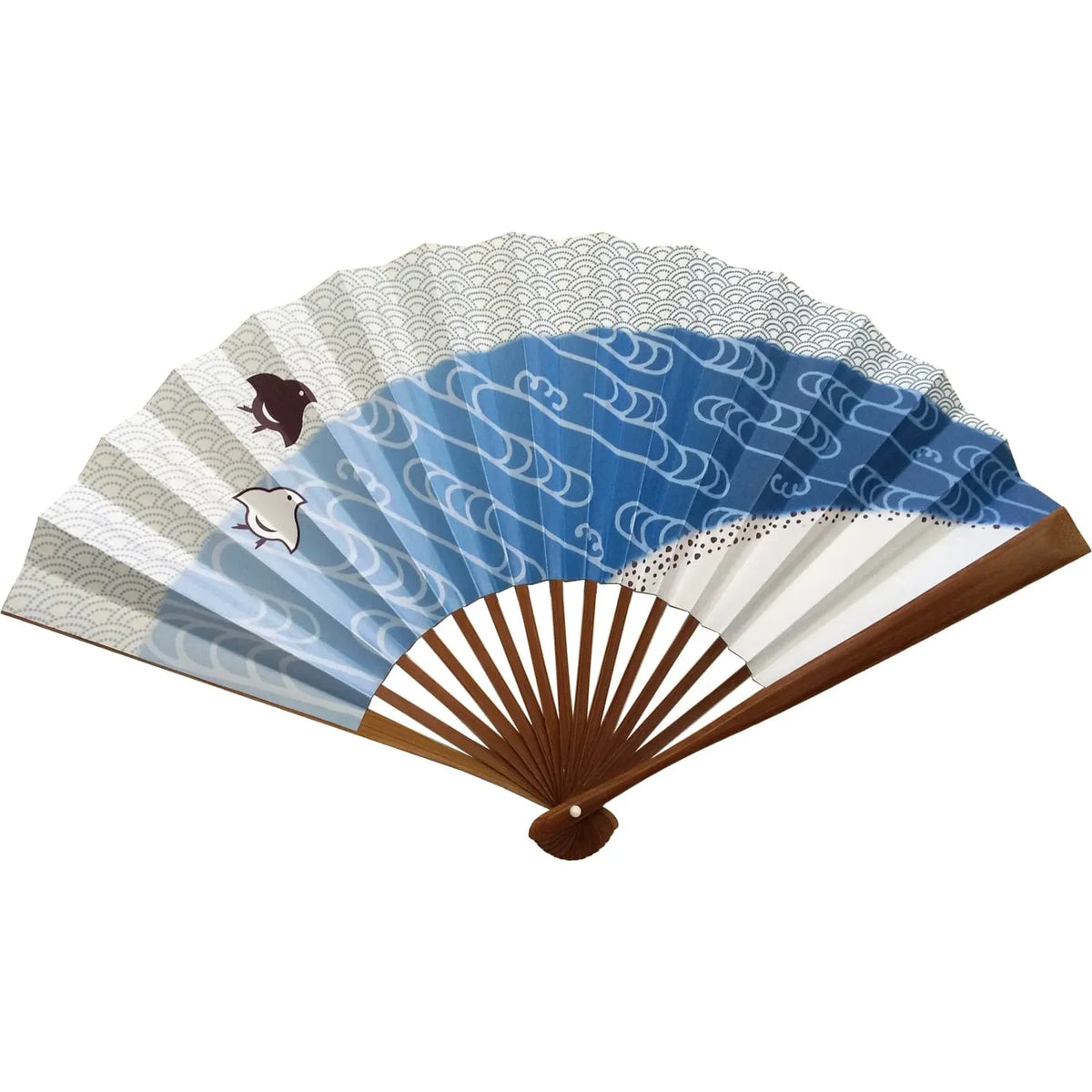
Edo fanDouble-sided pattern: Nami Chidori
Nami Chidorifolding fanis a good omen pattern that gives us strength to overcome hardships in today's ever-changing world.
Chidori" also has the meaning of "victory" and "achievement of goals" because of the "Chidoriri" logo.
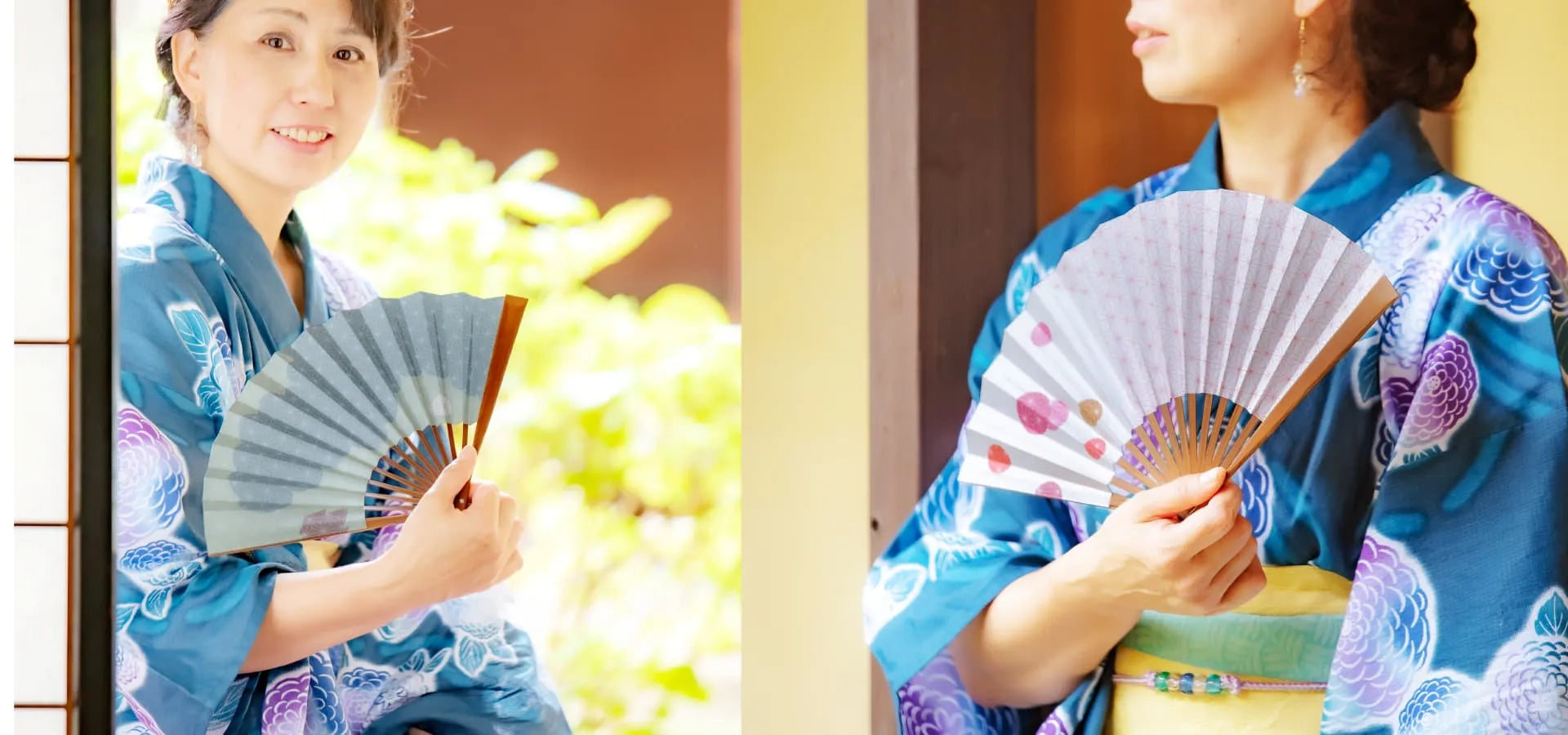
Asano-ha deisignWhat is a pattern?
Asano-ha deisignThe "K" is a symbol of the wish for the healthy growth of children, as it grows up to 4 meters in 4 months and keeps growing straight up.
「Asano-ha deisignThe pattern has a meaning of repelling evil spirits and has been widely used as a pattern for maternity clothes since ancient times.
Title
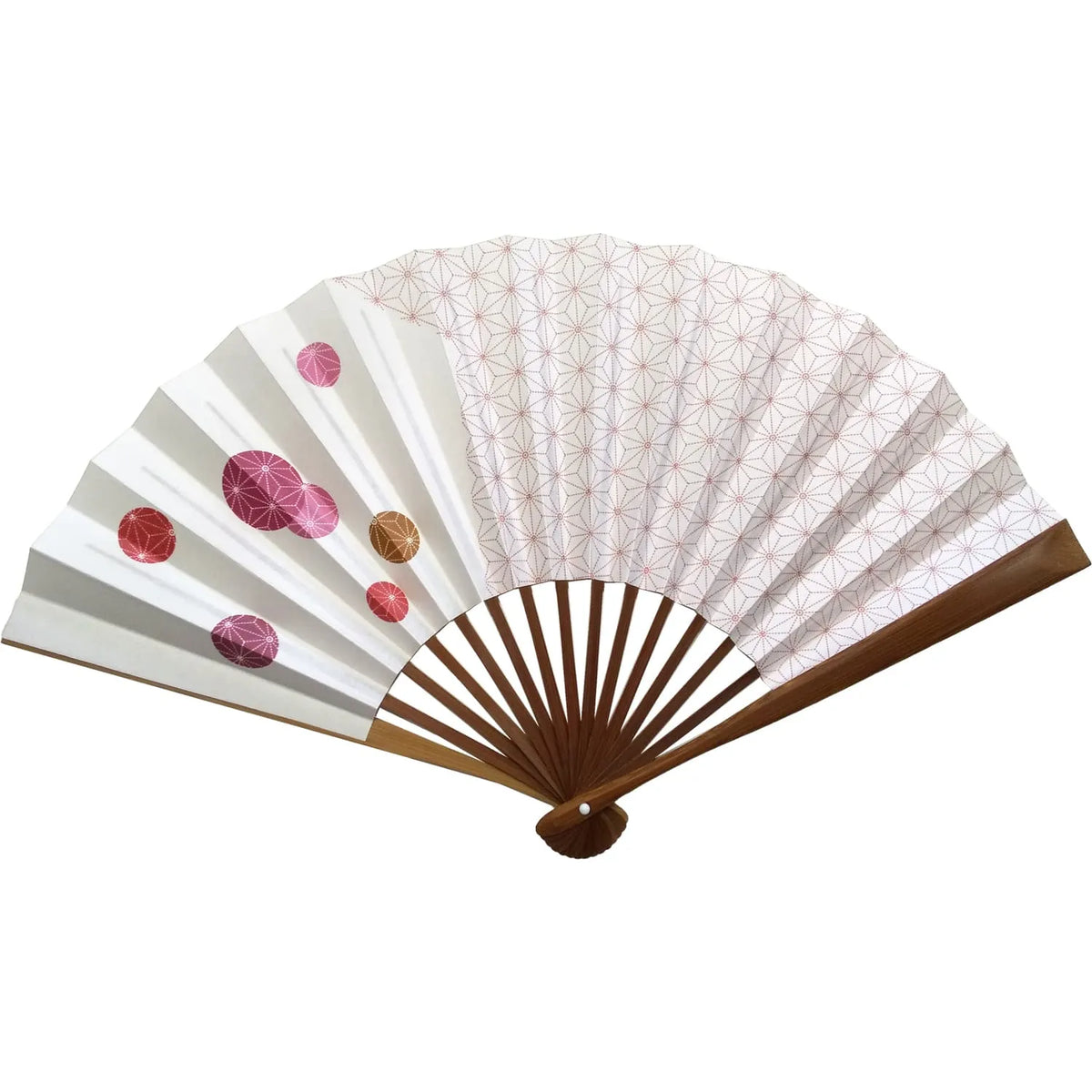
Edo fan Asano-ha deisignLight red ball
「Asano-ha deisignA combination of the words "ball" and "temari" in a light red color.Edo fanIt is a combination of "light red" and "temari".
What is Temari pattern?
Temari" is a pattern that enhances a woman's dainty charm, as seen in the design used in furisode (formal kimono for coming-of-age ceremonies).
Temari is not only a girl's plaything, but also a symbol of parents' wishes for their children's happiness, such as "for children to grow up in a round and round way" and "for everything to settle down in a round and round way.
It is also customary to give a Temari-patterned kimono as a good-luck charm to the bride-to-be, in the hope that she will be able to build a happy family.
The Temari pattern is also meant to ward off evil spirits throughout a woman's life, from a small child to an adult.
Title
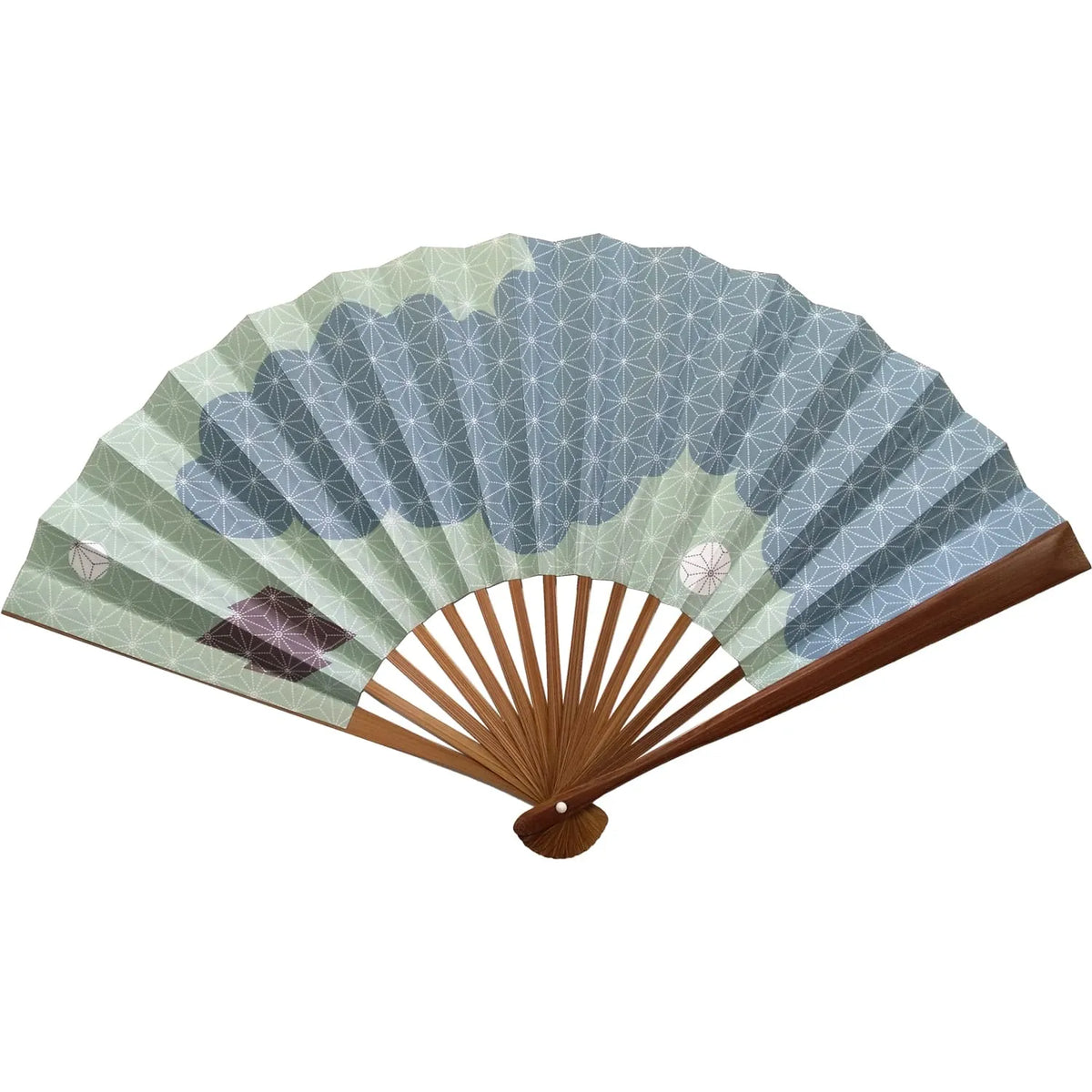
Edo fan Asano-ha deisignClouds: Usuka (Mentha) color
「Asano-ha deisignA combination of "Zuikumo" and "Zuikumo", the color of a peppermint.Edo fanIt is
What is Zuiun?
Clouds have great power to cause rain and snow and to influence the weather through their movement.
People in ancient times believed that gods and spirits resided in these mysterious clouds. In ancient China, it was believed that everything was formed from clouds.
Clouds drifting in the sky were named "cloud qi" or "auspicious clouds," and were regarded as auspicious.
In Japan, clouds were used in a variety of patterns and designs during the Asuka period (710-794) under the influence of the Chinese.
HereEdo fanThe design of "Zui-un" (auspiciousness of clouds) is shown here.

design of auspicious omens
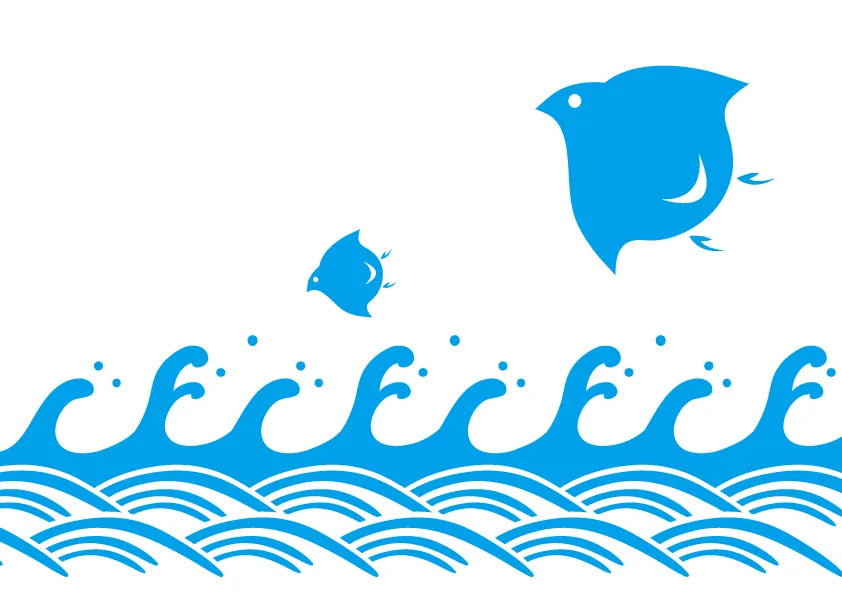
Chidori (plover waves)
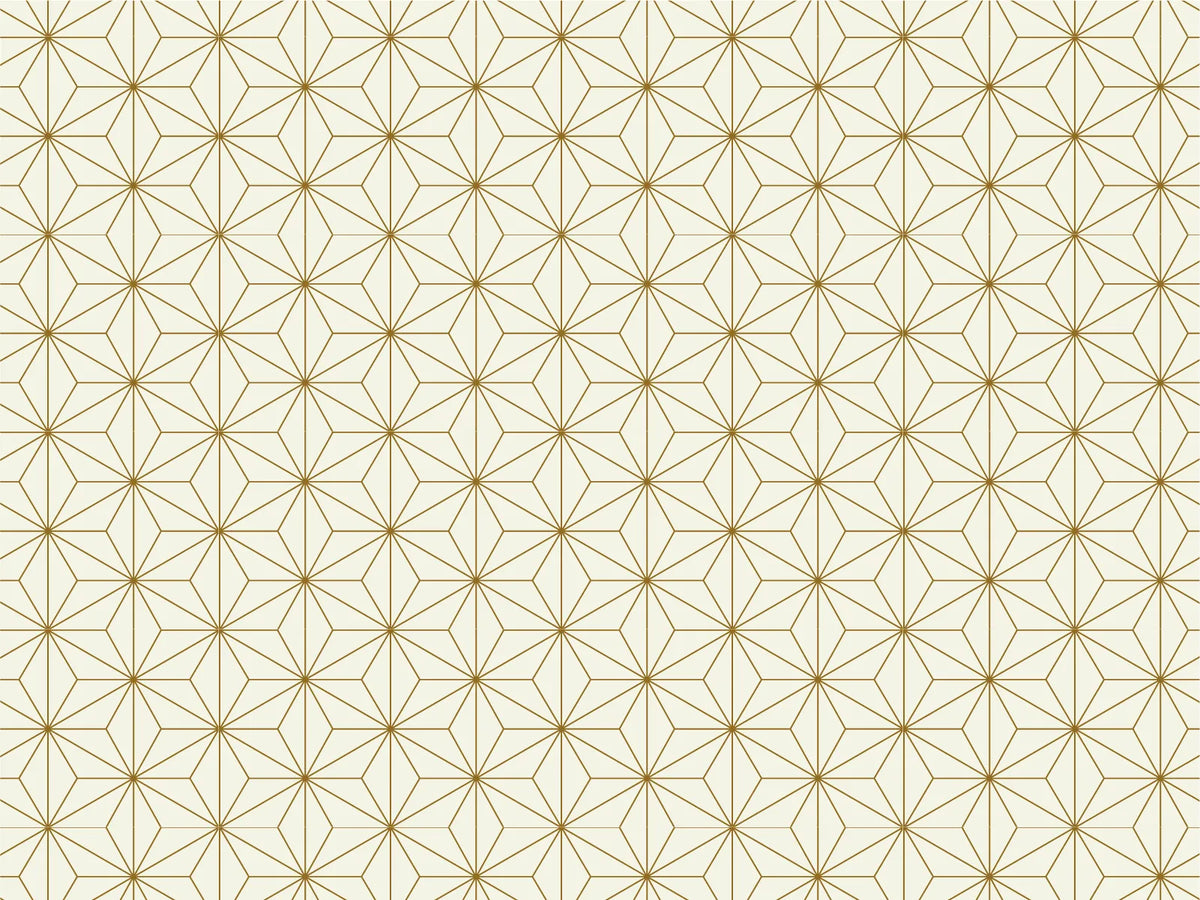
Asano-ha deisign
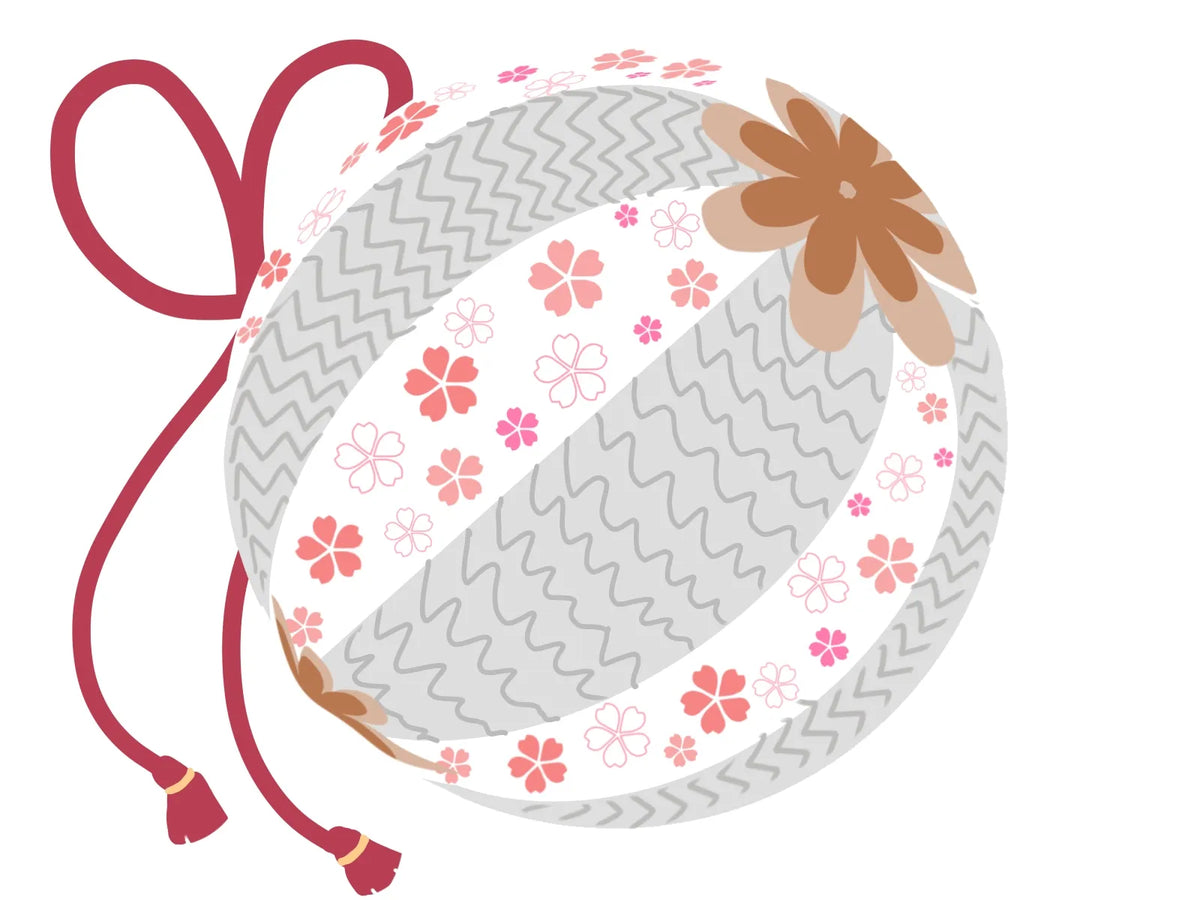
Temari
Ibasen(in a castle) rectangular space between the inner and outer gates (where the emperor can see the castle)Edo fan
Ibasenis dedicated to the preservation of traditional Japanese culture, especially Edo culture, and incorporates Edo designs and colors into the design of its products.
The materials used are carefully selected domestic bamboo, Japanese paper, and fibers, and these are then made into products by the hands of skilled craftsmen.
[Personalisation only]Edo fanSet Ma 9 go (Umakuiku) No.15
- Regular
- ¥12,980
- Sale
- ¥12,980
- Regular
-
- Unit Price
- per
[Personalisation only]Edo fanSet of six gourds (mb) No.11
- Regular
- ¥15,730
- Sale
- ¥15,730
- Regular
-
- Unit Price
- per
[Personalisation only]Edo fanSet Dragonfly Blue No.24
- Regular
- ¥15,730
- Sale
- ¥15,730
- Regular
-
- Unit Price
- per
[Personalisation only]Edo fan No.30Asano-ha deisignBall, light red
- Regular
- ¥13,750
- Sale
- ¥13,750
- Regular
-
- Unit Price
- per
[Personalisation only]Edo fan No.24 Double-sided dragonfly, blue
- Regular
- ¥13,750
- Sale
- ¥13,750
- Regular
-
- Unit Price
- per
[Personalisation only]Edo fan No.20 Axe Kotokiku
- Regular
- ¥11,000
- Sale
- ¥11,000
- Regular
-
- Unit Price
- per
[Personalisation only]Edo fan No.21 Kamawanu navy blue
- Regular
- ¥11,000
- Sale
- ¥11,000
- Regular
-
- Unit Price
- per
Edo fanSet Ma 9 go (Umakuiku) No.15
- Regular
- ¥8,580
- Sale
- ¥8,580
- Regular
-
- Unit Price
- per
[Personalisation only]Edo fan No.29 Double-sided Pattern Nami Chidori Blue sea wave
- Regular
- ¥13,750
- Sale
- ¥13,750
- Regular
-
- Unit Price
- per
[Personalisation only]Edo fanSet No.30Asano-ha deisignBall, light red, in paper box
- Regular
- ¥15,730
- Sale
- ¥15,730
- Regular
-
- Unit Price
- per
[Personalisation only]Edo fan No.25 Three-masu pattern, double-sided
- Regular
- ¥13,750
- Sale
- ¥13,750
- Regular
-
- Unit Price
- per
Edo fanSet of six gourds (mb) No.11
- Regular
- ¥11,330
- Sale
- ¥11,330
- Regular
-
- Unit Price
- per
Edo fan No.24 Double-sided dragonfly, blue
- Regular
- ¥9,350
- Sale
- ¥9,350
- Regular
-
- Unit Price
- per
Edo fan No.29 Double-sided Pattern Nami Chidori Blue sea wave
- Regular
- ¥9,350
- Sale
- ¥9,350
- Regular
-
- Unit Price
- per
Edo fan No.25 Three-masu pattern, double-sided
- Regular
- ¥9,350
- Sale
- ¥9,350
- Regular
-
- Unit Price
- per
![[Personalisation only]Edo fanSet Ma 9 go (Umakuiku) No.15](http://www.ibasen.co.jp/cdn/shop/products/DSC_1174ed.webp?v=1680060695&width=700)
![[Personalisation only]Edo fanSet Ma 9 go (Umakuiku) No.15](http://www.ibasen.co.jp/cdn/shop/products/S__45744307-ed_d64630f1-3b80-4af9-a733-6ec594b57be8.webp?v=1680060695&width=700)
![[Personalisation only]Edo fanSet of six gourds (mb) No.11](http://www.ibasen.co.jp/cdn/shop/products/mubyou-1.webp?v=1680060807&width=700)
![[Personalisation only]Edo fanSet of six gourds (mb) No.11](http://www.ibasen.co.jp/cdn/shop/products/mubyou-2.webp?v=1680060807&width=700)
![[Personalisation only]Edo fanSet Dragonfly Blue No.24](http://www.ibasen.co.jp/cdn/shop/products/tonbo_1.webp?v=1680061286&width=700)
![[Personalisation only]Edo fanSet Dragonfly Blue No.24](http://www.ibasen.co.jp/cdn/shop/products/tonbo_2.webp?v=1680061286&width=700)
![[Personalisation only]Edo fan No.30Asano-ha deisignBall, light red](http://www.ibasen.co.jp/cdn/shop/products/DSC_1652_1.webp?v=1680157032&width=700)
![[Personalisation only]Edo fan No.30Asano-ha deisignBall, light red](http://www.ibasen.co.jp/cdn/shop/products/DSC_1652_2.webp?v=1680157032&width=700)
![[Personalisation only]Edo fan No.24 Double-sided dragonfly, blue](http://www.ibasen.co.jp/cdn/shop/products/021.webp?v=1679126340&width=700)
![[Personalisation only]Edo fan No.24 Double-sided dragonfly, blue](http://www.ibasen.co.jp/cdn/shop/products/021b-2.webp?v=1679126340&width=700)
![[Personalisation only]Edo fan No.20 Axe Kotokiku](http://www.ibasen.co.jp/cdn/shop/products/017.webp?v=1679125668&width=700)
![[Personalisation only]Edo fan No.20 Axe Kotokiku](http://www.ibasen.co.jp/cdn/shop/products/017-2.webp?v=1679125668&width=700)
![[Personalisation only]Edo fan No.21 Kamawanu navy blue](http://www.ibasen.co.jp/cdn/shop/products/018.webp?v=1679126034&width=700)
![[Personalisation only]Edo fan No.21 Kamawanu navy blue](http://www.ibasen.co.jp/cdn/shop/products/018-2.webp?v=1679126034&width=700)
![[Personalisation only]Edo fan No.29 Double-sided Pattern Nami Chidori Blue sea wave](http://www.ibasen.co.jp/cdn/shop/products/DSC_1650_1.webp?v=1680156914&width=700)
![[Personalisation only]Edo fan No.29 Double-sided Pattern Nami Chidori Blue sea wave](http://www.ibasen.co.jp/cdn/shop/products/DSC_1650_2.webp?v=1680156913&width=700)
![[Personalisation only]Edo fanSet No.30Asano-ha deisignBall, light red, in paper box](http://www.ibasen.co.jp/cdn/shop/products/DSC_0743_1.webp?v=1680650932&width=700)
![[Personalisation only]Edo fanSet No.30Asano-ha deisignBall, light red, in paper box](http://www.ibasen.co.jp/cdn/shop/products/DSC_1652_2_bbee98d7-45ce-4734-8c72-5ae88d0f6329.webp?v=1680651044&width=700)
![[Personalisation only]Edo fan No.25 Three-masu pattern, double-sided](http://www.ibasen.co.jp/cdn/shop/products/022.webp?v=1679126432&width=700)
![[Personalisation only]Edo fan No.25 Three-masu pattern, double-sided](http://www.ibasen.co.jp/cdn/shop/products/022b.webp?v=1679126433&width=700)
